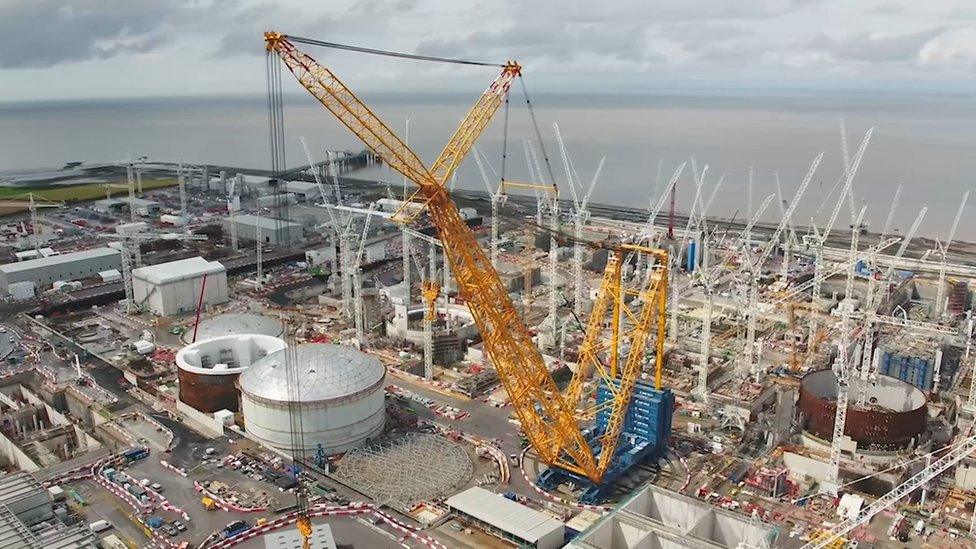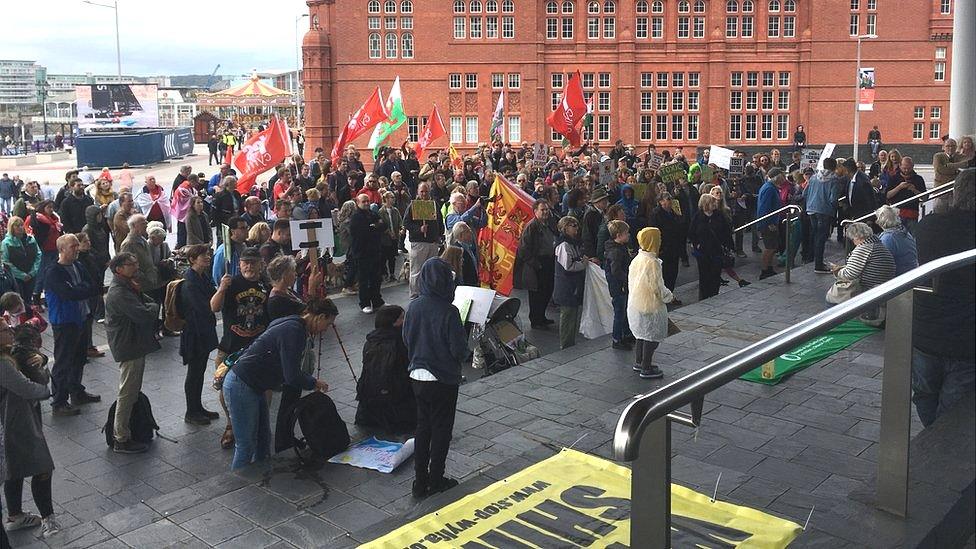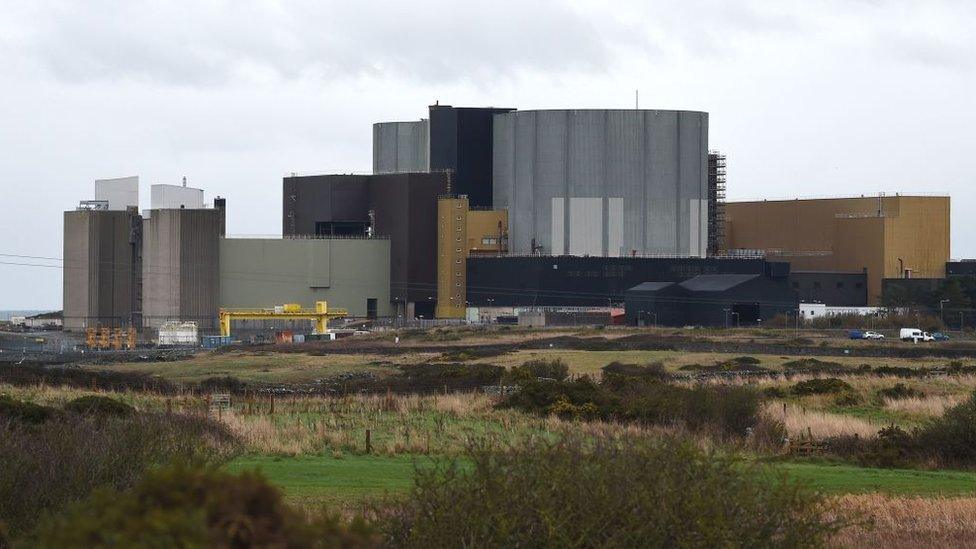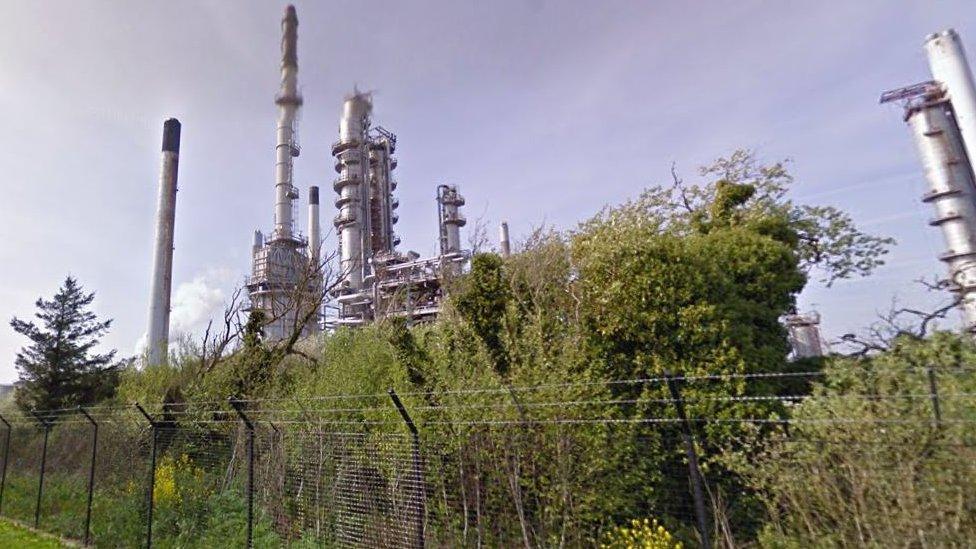Hinkley: Activists lose bid to stop nuclear plant dumping mud
- Published

The UK's newest nuclear power station is on track to open by the end of 2026
Campaigners have lost a legal challenge to stop mud from alongside Hinkley Point C being dumped in the Severn Estuary.
The nuclear plant's developers, EDF, were using a licensed disposal site near Cardiff but this led to extensive protests.
The campaigners argued a marine licence for the work was unlawfully amended, without proper scrutiny.
But a High Court judge dismissed their case on all grounds.
EDF dubbed the decision "good news" for thousands of workers at the site.
It was granted permission for the latest mud dumping by England's Marine Management Organisation (MMO) in August.
The switch from Cardiff to Portishead, on the English side of the estuary, was challenged by activists who argued the company should not have been able to vary an existing licence it had for work at sea.
At a two-day hearing this month, judge Mr Justice Holgate said he considered the claimant's approach "to involve an impermissible gloss" on the relevant legislation and that "there was nothing unlawful in the MMO's decision".

Dredging and mud dumping in the Bristol Channel sparked protests
An EDF spokesman said: "Today's decision is good news for people who care about the environment and climate change.
"It will enable thousands of workers to get ahead building a project that will protect the environment from climate change and provide Britain with reliable low carbon electricity for decades to come."
Campaign group Tarian Hafren, led by Super Furry Animals keyboard player Cian Ciaran, has been approached for comment.

Cian Ciaran of Welsh rock group Super Furry Animals took EDF to court over mud-dumping off Cardiff Bay in 2018
The previous dumping proved controversial because of fears the mud could be contaminated with nuclear waste from the Hinkley A and B reactors, which used to be on the site.
But those claims were dismissed by the company, Welsh and English environmental authorities and the Welsh government as tests showed the sediment was similar to that found elsewhere in the Bristol Channel.

WILD MOUNTAINS OF SNOWDONIA: Five farming families open their gates and share their lives
LAST CHANCE TO SAVE: Will Millard explores some of Wales’s hidden historic buildings

- Published16 March 2022

- Published10 May 2021

